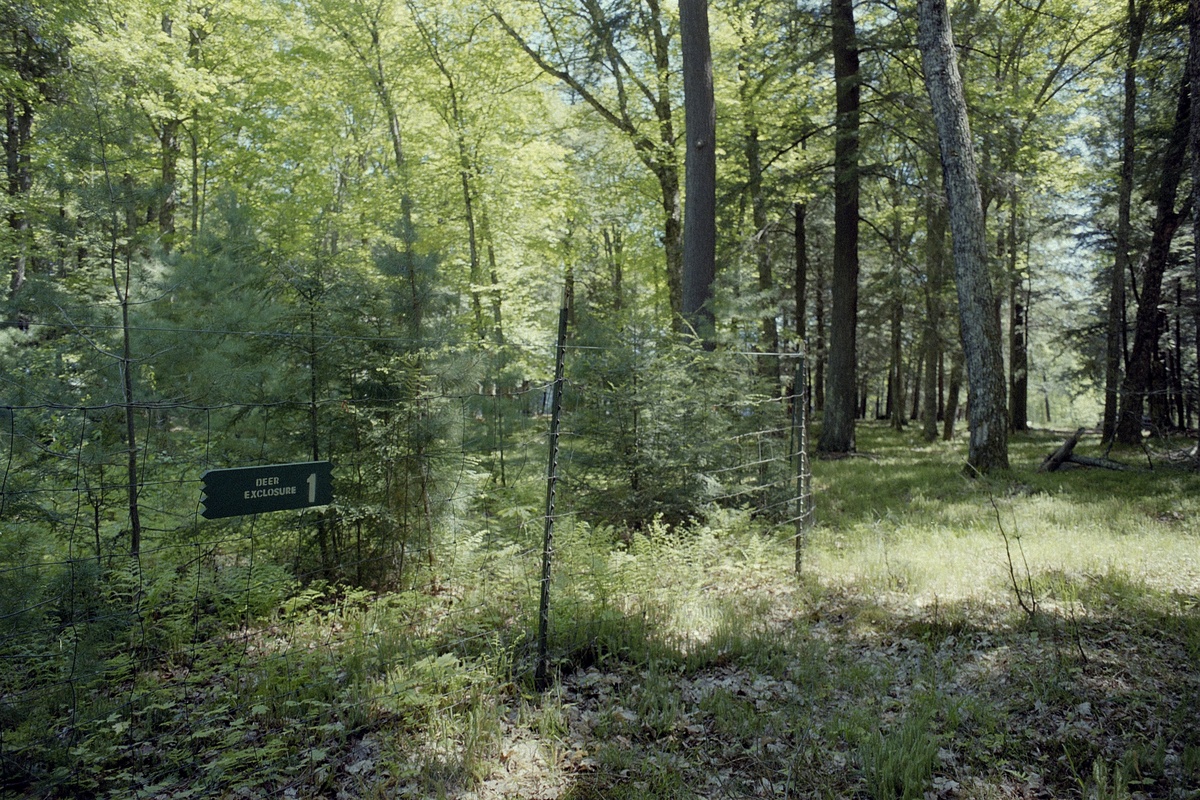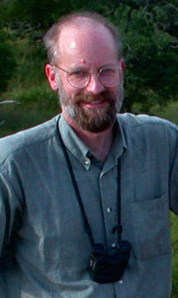Deer account for almost half of long-term forest change, study finds

New research shows white-tailed deer have had a dramatic impact on the composition of forests in northern Wisconsin. A dense growth of white pines and some eastern hemlock lives inside this exclosure that protects it from deer.
Photos: Don Waller
A study released this week has linked at least 40 percent of species changes in the forests of northern Wisconsin and Michigan over the past 60 years to the eating habits of white-tailed deer.
A research group led by Donald Waller, a professor of botany at the University of Wisconsin–Madison, used a pair of strategies to look at the ecological impact of deer. First, they resurveyed 62 sites across northern Wisconsin and Michigan in 2000-01 that were first studied by former UW–Madison Professor John Curtis and his students in the 1950s. “This showed us just how the forest has changed during a time when deer were becoming much more common, but it did not pinpoint the deer themselves as the cause of the changes,” Waller says.

Don Waller
Waller’s group later examined plant communities inside and outside 17 fenced “exclosures” built to keep out deer but not smaller mammals. The study was published in the journal PLOS ONE.
Waller — together with Katie Frerker, a former graduate student in his lab who earned her master’s degree here and is now working for the U.S. Forest Service in Duluth, Minnesota; and Autumn Sabo, a Ph.D. student in the Department of Forest and Wildlife Ecology — discovered that many of the plants commonly seen in the early surveys now mostly occur inside the protective exclosures.
Where deer have been common, ferns and grasses — as well as several nonnative plants — have become more abundant. Deer greatly reduced regeneration of native trees, the growth of shrubs, the height of forest understory plants, and the abundance of flowering plants that are neither woody nor grassy.
The two lines of evidence converge on the same general conclusion, Waller says: Deer account for at least 40 percent of the change seen in the forests over the past half-century or so. “The study links microcosm to macrocosm. We have exclosures in the same region where we have documented long-term changes in the plant community over the past 50 years. These are giving us the same message.”
The study may actually underestimate the impact of deer, Waller suggests, citing their attraction to the Canada yew, a shrubby evergreen that has been eliminated across most of the north woods. Thus, yew is no longer counted as a baseline species, even though its disappearance likely reflects deer browsing.
Maples were unable to regenerate under heavy browsing outside an exclosure (right) built to protect a small patch from deer.
Furthermore, deer were already quite common when the exclosures were installed 15 or 20 years ago. “By that point, deer may have already eliminated some species that have not recolonized since. So this type of study would miss these losses,” says Waller.
Some plants eliminated by deer need decades to recover, Waller says. “If a species is slow growing, or has seeds that are not dispersed readily by birds or as stick-tight burrs, it needs more time to reappear.”
The exclosures, he says, “serve as controlled experiments once they are run for 15 or 20 years, as these were.”
Waller says attributing at least 40 percent of the change in forest structure to white-tailed deer was surprising even to somebody like him who has studied deer for more than two decades. “It’s rare in ecology to find one factor that accounts for so much change,” he says.
Deer hunting is a political subject in Wisconsin, and while Waller would like to see greater harvests, especially of does, he also favors gaining a better picture of deer’s impact.
“I’d like to see more citizen science, with hunters and high school classes paying more attention to (the effects of) deer,” he says. “These groups could build exclosures or plant seedlings and then track what gets eaten. This would be very straightforward. It would not cost much, and would produce valuable data to inform hunters, professional managers and the public about whether deer density is too high or too low.”




